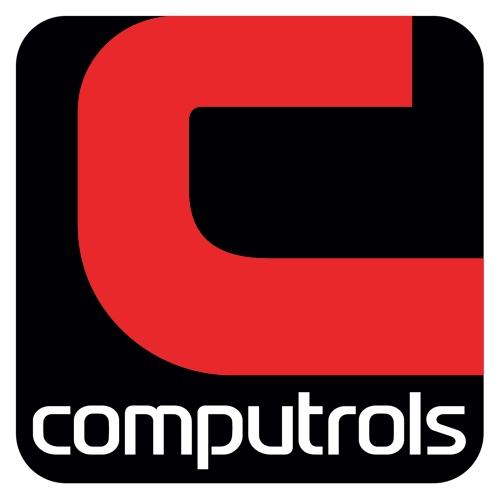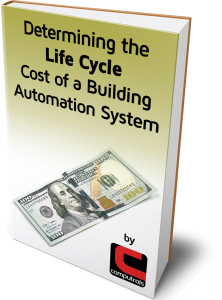
Healthcare facilities can be some of the most challenging buildings to maintain while trying to reduce energy costs. First and foremost, facility managers are responsible for occupant health and safety. This means meeting extremely high thresholds for indoor air quality (IAQ), particularly in operating rooms and other critical areas of hospitals. In this guide, you will find energy-saving strategies that also allow you to preserve occupant health and safety.
Please fill out the below form to download our free guide (*required):
Healthcare Tips Download
"*" indicates required fields

Get a Building Automation System That You Can Operate

The first step to saving energy in any facility is always going to be based on your existing data. The vast majority, if not all, of the data that you will need to access, will be held in your energy management system. If you have a system that is not saving histories on all of your points, or even worse, a system you don’t know how to navigate, you are going to struggle to save energy in your facility.
The most important aspect of any energy management software is its usability. As a healthcare facility manager, you should be able to access reports, command points, write logic, change schedules, and detect when your system is not running properly.
As a hospital facility manager, you cannot afford downtime. That means you cannot afford to have to call a technician every time you need to make a change to the EMS software. Facility managers also tend to have a much better understanding of how their buildings run than technicians that come in to fix issues periodically.

Right-sizing
A U.S. Environmental Protection Agency (EPA) study found that almost 60 percent of building fan systems were oversized by at least 10 percent, with an average oversizing of 60 percent. “Right-sizing” your fan systems to match the requirements of your facility’s load can potentially result in significant energy savings.
Note: If you are implementing new energy efficiency measures in your facility, fan-sizing should done after these measures have been put in place and a new baseline has been established.

Retrocommissioning
Retrocommissioning is the process of ensuring your mechanical systems are functioning as they are designed. All too often we find dampers that are left wide open or air handlers that are running 24/7 but are reporting otherwise to the head-end of the EMS. Retrocommissioning gives you a chance to catch unnecessary waste and recalibrate building systems to function more efficiently.


Operating Room HVAC Setback Strategies

Operating rooms (ORs) have particularly stringent requirements for temperature, humidity, pressure, and air changes per hour (ACH) so great care must be taken when implementing these setback strategies.
Often times when in use, ORs are designed and operated far above the set standards as a means of avoiding violations and creating potentially hazardous environments. When unoccupied, many ORs are left in these hypervigilant conditions and waste a great deal of energy. In this monograph created by the American Society of Healthcare Engineers (linked below), a number of experts share their knowledge and experiences regarding OR HVAC setback strategies: Operating Room HVAC Setback Strategies

Onsite Energy Generation – Heat Recovery
Although this approach does not technically “save” energy, it does reduce a hospital’s energy bill and its impact on the environment. Combined heat and power (CHP) systems, also known as cogeneration systems, have become very popular amongst hospitals in recent years. In some cases, these systems have been able to generate enough electricity to run entire facilities, saving millions of dollars.
In short, CHP systems convert the facility’s waste heat into energy that can be used for heating and cooling. To see if your facility is a good candidate for CHP, see this guide created by the Environmental Protection Agency: Is My Facility a Good Candidate for CHP?

Supply Air Reset
With a modern, a building automation system, AHU Supply Air Temperatures can often be automatically adjusted higher or “Reset” based on Outside Air Temperatures, Zone Demand, or a combination of both. Limits can be placed to ensure that setpoints are never reset higher or lower than desired.
In addition to energy savings, this type of strategy can also reduce wear and tear on equipment and help to improve comfort by eliminating excessively cold areas.

Motion Sensors/Timers for Seldom Used Spaces
Because of the 24/7 nature of hospitals, electricity costs for lighting can become astronomical at times. By placing motion sensors and/or timers in seldom-used spaces such as bathrooms, closets, and stairwells facility managers can help eliminate waste. Office areas for administrative staff should also be considered when making this effort. Energy savings can easily be realized by simply adding a schedule to the lighting in these departments.

Equipment Upgrades

Upgrading your facility and its energy-consuming equipment is an obvious way to reduce energy usage but one that must be considered when facility managers are aiming to make a significant impact. A well-thought-out retrofit project may require more capital on the front end but will likely yield your quickest return on investment.
» LED Lighting + Daylight
According to the U.S. Department of Energy, LEDs use less than a third of the energy consumed by fluorescents (140 kWh) and seven times less than incandescents (350 kWh). LEDs also have a higher lumen output and require less maintenance, lasting years longer than their competition. With lights running 24 hours a day, hospitals can’t afford to ignore this new technology.
» Daylighting
Daylighting controls have only recently become more prevalent in hospital settings. This approach utilizes daylight sensors that dictate how much artificial light is necessary in a given space and subsequently dims or brightens the lamps in the area. The University of Oregon completed a study on daylighting for hospitals which determined that daylighting, in combination with energy-efficient lighting, can lessen lighting power density in office areas from 2.2 W/sq ft to 0.88 W/sq ft without a reduction in measured light levels.
» HVAC Equipment
In addition to “right-sizing” and implementing new control strategies, upgrading to the latest in HVAC technology can generate significant energy savings. Technology, such as variable speed drives and more efficient equipment, can drastically reduce energy usage by the HVAC system.
» Building Envelope
The gains and losses in temperature caused by a building’s envelope can severely limit your ability to save energy in a healthcare facility. The walls, roof, windows, and foundation are essentially serving as a barrier between your conditioned facility and the outside elements. If your facility is more than 15 years old, a simple window retrofit alone could net considerable savings.
Sources:
- http://www.healthcaredesignmagazine.com/architecture/top-5-things-save-energy-hospitals/
- https://practicegreenhealth.org/topics/energy-water-and-climate/energy/best-practices-energy-efficiency
- https://business.directenergy.com/understanding-energy/industries/healthcare/energy-saving-checklist-for-hospitals
- http://ec.europa.eu/environment/life/project/Projects/files/book/LIFE04ENVGR114-EE.pdf
- https://www1.eere.energy.gov/buildings/publications/pdfs/alliances/hea_hvac_fs.pdf
- https://www1.eere.energy.gov/buildings/publications/pdfs/alliances/hea_chillers.fs.pdf
- https://www1.eere.energy.gov/buildings/publications/pdfs/alliances/hea_lighting_fs.pdf
- https://www1.eere.energy.gov/buildings/publications/pdfs/alliances/hea_ebc_fs.pdf
- http://www.ashe.org/management_monographs/pdfs/mg2011love.pdf
- https://www1.eere.energy.gov/buildings/publications/pdfs/alliances/hea_chp_fs.pdf

